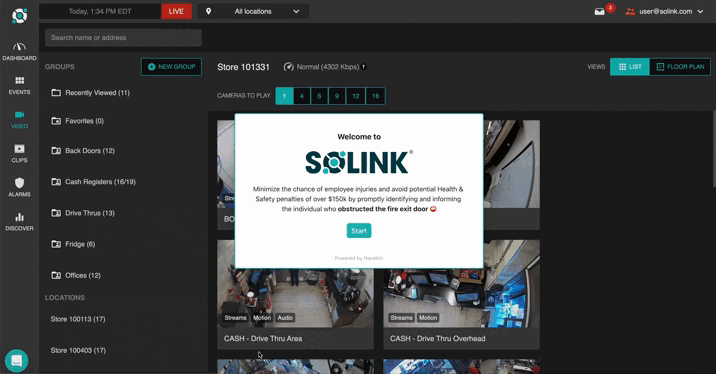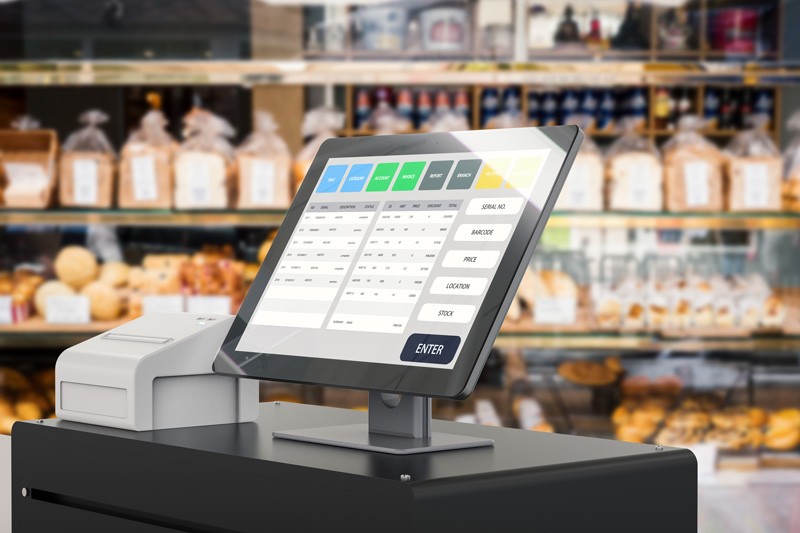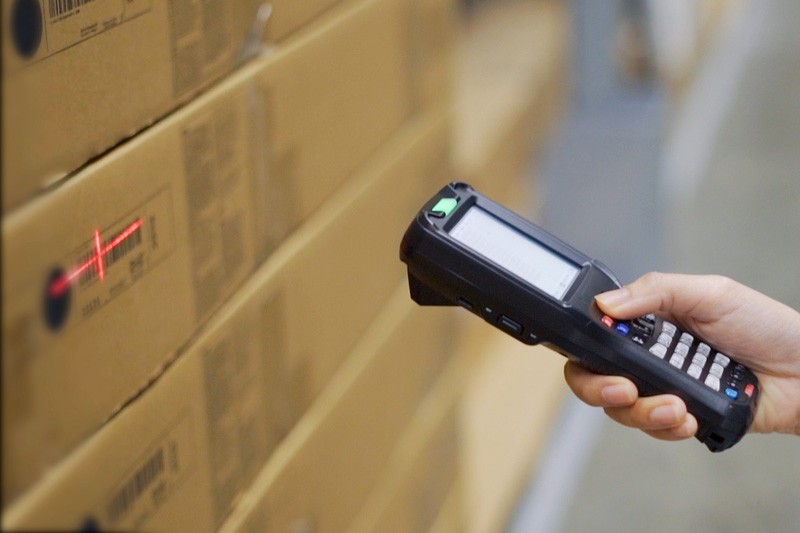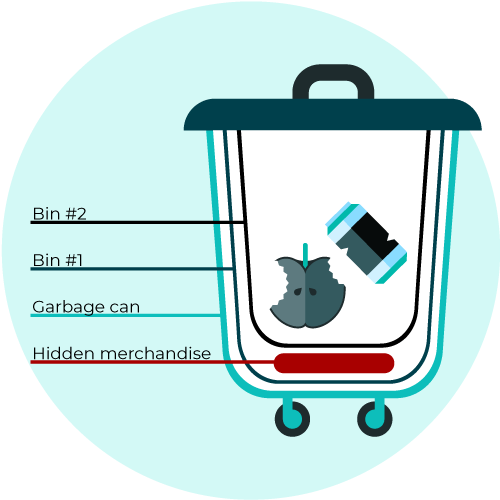There was a time when employee theft was simply “the cost of doing business.” With tighter margins and more competition, companies can no longer take a passive stance with employees stealing from work. It is more important than ever to prevent employee theft. Employee theft is a significant concern for businesses, with studies indicating that approximately 75% of employees have admitted to stealing from their employers at least once.
Learn how Solink can help prevent employee theft in your business.
Table of Contents
Toggle- What is employee theft?
- Types of employee theft
- Why do employees steal?
- 13 top-tier ways to prevent employees from stealing from you
- 1. Utilize a complete video security system
- 2. Invest in a modern point of sale (POS) system
- 3. Track all transactions
- 4. Monitor inventory closely
- 5. Have a solid cash handling procedure
- 6. Have video coverage of your garbage dumpsters
- 7. Follow a strict hiring process
- 8. Write an employee theft policy, and then stick to it
- 9. Be mindful of employee behavior
- 10. Cultivate a good relationship with your employees
- 11. Focus on employee training
- 12. Have employees work in pairs where possible
- 13. Keep your stores clean and organized
- Prevent employee theft with Solink
What is employee theft?
Here’s a simple definition of employee theft:
Employee theft: A worker taking something of value from their employer without permission.
Types of employee theft
While the employee theft definition above is simple, beneath the surface there are many types of employee theft. They all come down to the “something of value” being taken. Let’s take a look at five of the most common things employees steal from work: cash, data, merchandise, supplies, and time.
- Cash: Cash is usually the most desirable item to steal from work. It can occur in the count room, at the point of sale (POS), or in more indirect ways, such as fraud or embezzlement.
- Data: Data is big business now, and its value is only increasing. Employees who have access to this valuable information should sign non-disclosure agreements (NDAs).
- Merchandise: Employees can steal products out of the backroom or from the shelves. This is a major factor in inventory shrinkage.
- Supplies: Employees might not think much about taking a pen or some stick-it notes from work, but office supplies cost money, and a relaxed environment for the personal use of company supplies can add up to major losses.
- Time: Time theft is often treated differently from all the other forms of employee theft. However, during the current labor shortage, theft of time deserves similar consideration to the other, more obvious forms of theft.
Why do employees steal?
This question can be answered using human psychology. There’s research pointing to two separate issues answer the question on why employees steal from work: the theft triangle and the 10-80-10 rule.
The theft triangle stipulates that three conditions need to be met for employees to steal from work:
- Opportunity: An employee must see a chance to steal at work, for example a failure in the processes and technologies that make up your loss prevention system.
- Motivation: Sometimes called “need,” this is the requirement that makes an employee want to steal from their company, for example a hospital bill or unforeseen car repairs.
- Justification: This is the moral rationalization for employee theft, for example anger at company policies or the feeling that a big corporation won’t miss a few pieces of merchandise.
It’s difficult to change the motivations and justifications to steal, but opportunities can be eliminated with an effective business security system.

The 10-80-10 rule divides employees into three groups:
- 10% of employees are actively looking to steal.
- 80% of employees would steal if the opportunity, motivation, and justification were found.
- 10% of employees will never steal.
To prevent employee theft, put a hiring process in place that screens out the first 10%. The next 80% do not want to steal, so proper security measures will keep them honest.
How to find and prevent employee theft far easier (read ahead)
Save hours sifting through video to find what your looking for in seconds with motion search in our self-guided tour.

Want a personalized demo?
13 top-tier ways to prevent employees from stealing from you
Here are 13 top-tier ways to prevent employees from stealing—so you can safeguard your assets and maintain a strong, honest workplace.
1. Utilize a complete video security system
Most companies use some form of video security. That’s a great start to a business security camera system. However, it is not enough. You need an adaptive video security system that gives you the data you need when you need it.
Solink offers such a solution. By allowing you to search for important information while skipping the hours of fast forwarding through other footage, Solink brings a cost-effective loss prevention tool to your enterprise.
Solink’s fast and easy-to-use video analytics platform operates as case management software, real-time video monitoring solution, and exception reporting tool combined. The added efficiency makes it profitable to go after even the smallest source of loss so your employees know you mean business when it comes to finding and eliminating employee theft.
Best of all, Solink works on your smartphone or laptop so you can perform remote video monitoring anytime, anywhere.
To find out how Solink completes your loss prevention system, book a demo today.
2. Invest in a modern point of sale (POS) system
A POS is more than just a way to checkout customers. It is a data collection system that helps you find anomalous transactions that might be signs of employee theft. If you also use your POS as a time clock, then it can even help you find time theft.
Solink integrates with dozens of POS systems to make sure that you can pair your transaction data with video footage. This helps you keep an eye on all of your high-risk transactions.
Finding fraudulent voids, discount abuse, and more is easy with Solink’s search feature.

3. Track all transactions
With a modern POS, you can track every transaction. This gives you insights into a lot more than just loss prevention. For example, you can identify employees who are underperforming on sales or those worthy of recognition for beating sales goals.
However, POS employee theft is such a major concern, we’ve dedicated an entire separate article to the topic.
4. Monitor inventory closely
There are three main time periods that need to be considered in your inventory management process:
- As inventory enters your store: All merchandise should be checked against the shipping manifest as it enters your store. If this is not being done, then there’s a chance that your warehouse staff, delivery person, or someone else is stealing from you.

- While inventory is in your store: Security cameras and video alarms, surprise audits, and employee training are all tools that can be used to monitor inventory while it is in your retail locations.
- As inventory leaves your store: Shoplifting comes in many forms, and one of them is changing the price tags on products to pay a lower price. This may or may not include collusion with staff members. Employees should be instructed to carefully check as they scan each item that it matches the description in the POS. Conversely, an electronic article security (EAS) system can help prevent items leaving the store without being purchased.
5. Have a solid cash handling procedure
Cash is the single biggest target for theft. Your cash handling procedure needs to be bulletproof to make sure any cash coming into your shop makes its way to the safe and then your bank account. Spend time learning the best practices on cash handling.
Furthermore, don’t assume that because you’ve never had cash stolen that your process is secure. It’s often the case that you have just been lucky until now and something will arise in the future.
Your cash handling procedure should be reviewed regularly to make sure that it remains as secure as possible.

6. Have video coverage of your garbage dumpsters
It might be surprising that we’d mention one specific area of your business—and for that area to be the dumpsters. However, this is a common route for stolen merchandise to leave a store. Employees place stolen merchandise in a garbage bag. They then place a second garbage bag over top, which is then filled with rubbish as normal. When they bring out the trash, the garbage goes in the dumpster, while the second bag filled with stolen items is left nearby to be picked up later.
This is a popular enough employee theft strategy that a security camera aimed at the dumpster and exit leading to the garbage area is recommended in Solink’s camera placement floor plan.

Find the routes being used by employees to steal from work and then monitor them for activity.
7. Follow a strict hiring process
This is often the first and only piece of advice on loss prevention focused on employees that other articles cover. That’s problematic during a labor shortage when you are often faced with not enough employees and a less qualified hiring pool. However, whenever possible background and reference checks should be performed before onboarding new employees.
Don’t worry, the next few points go beyond your hiring process and offer advice you can use even during a labor shortage.
8. Write an employee theft policy, and then stick to it
Every company should have an employee theft policy. It should define all the different types of employee theft and the consequences if an employee is found stealing from work.
Then, make sure to communicate the theft policy with the entire staff. This is not a situation where mentioning the policy once is enough. Talking to employees about theft should be an ongoing conversation. This reminds them that the company takes theft seriously.
9. Be mindful of employee behavior
Employees who steal from work now have a secret that could be uncovered at any moment. They are usually not career criminals and the fear of being caught and guilt about doing something wrong will weigh heavy on them.
This can lead to behavior changes. If you notice behavior changes, it is worth seeing if the staff member is ok. It may be that they have stolen something, or there could be something else bothering them. The latter is important to find out about as well and leads to our next step.

10. Cultivate a good relationship with your employees
Employees who like their job, their manager, and feel like they are treated fairly and with respect are less likely to steal. Higher pay and added perks are universally appreciated, but there are other ways to show your staff that you care about them. For example, making a point to praise an associate every morning during the stand up meeting can foster teamwork and a positive work environment.

Find what you’re looking for in seconds
Save hours sifting through video to find what your looking for in seconds with motion search in our self-guided tour.

Want a personalized demo?
11. Focus on employee training
As mentioned above, training should never be considered a check list item in the onboarding process. Ongoing coaching helps build skills so employees feel the benefit of working at your company.
Continuing training also gives the manager the opportunity to discuss loss prevention with employees on a regular basis. It fosters trust in management. It also tells employees that chatting with managers is not just for “when you are in trouble.” All of this combined makes it more likely that an employee will tell management if they think a staff member is stealing.

12. Have employees work in pairs where possible
It is far less likely that an employee will steal if they are near another employee. Now instead of a single employee’s decision, stealing is an act of trust between two people.
The buddy system can help prevent theft when employees are working far away from managerial oversight. It also makes it less likely that employees will accept fraudulent returns or voids if they need a manager’s signature to process the transaction.
13. Keep your stores clean and organized
Customers prefer to shop in clean and organized stores. This makes cleanliness a revenue driver, so you should already be making sure that your stores remain clean and tidy. However, this policy should extend to the storage areas as well. It’s harder to see and prevent employee theft in the back room when there are empty boxes, old merchandise, etc. on the floor and shelves.
Solink helps you monitor many locations on your smartphone or laptop from anywhere. Now you can make sure company policies are being followed at all of your locations.
To see how Solink can help you audit your locations, sign up for a demo today.
Prevent employee theft with Solink
Solink presents you with video evidence of theft, whether it’s through transactions at the POS or removing whole boxes of merchandise from the back room. Our VSaaS solution shows you what you need to see while skipping the rest.
Find what you’re looking for in seconds
Save hours sifting through video to find what your looking for in seconds with motion search in our self-guided tour.

To see how Solink helps you prevent employee theft, sign up for a demo today.
